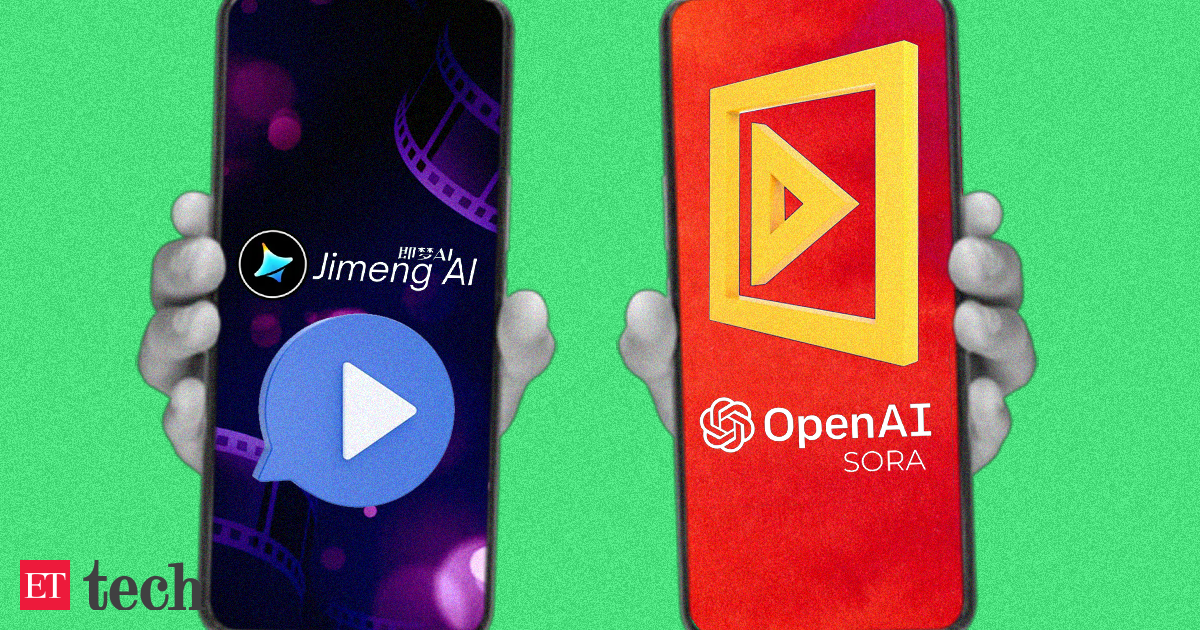What does Jimeng AI do?
Jimeng AI was developed by ByteDance-owned Faceu Technology and can generate images or videos from text prompts. It is available on both the Android and Apple App Stores, but only in China. The Chinese word Jimeng translates to “immediate dream.”
Users can use the app to create 80 images or 26 videos for free. The app offers monthly subscriptions starting at 69 yuan or about $10 to generate more videos.
The mainland Chinese AI video generation market is projected to reach 9.3 billion yuan in 2026, up from 8 trillion yuan in 2021, according to research firm LeadLeo.
Discover the stories that interest you
OpenAI’s Sora remains available only to red team members, who are tasked with assessing critical areas for damage or risk, and to visual artists, designers, and filmmakers, who are tasked with providing feedback.
Has China produced other notable GenAI models?
There has been significant internal competition in China in the field of video models. Last month, another short-video platform, Kuaishou, launched the Kling AI text-to-video model, the beta version of which is available worldwide for those who register with an email address.
Following this launch, AI startup Zhipu introduced its Ying text and image-to-video conversion model. The startup also has a chatbot called ChatGLM.
Similarly, Tsinghua University and AI startup ShengShu Technology created Vidu AI, which can turn images and text into videos.
Chinese artificial intelligence unicorn 0.1 AI, founded by former Google China chairman Kai-Fu Lee, has launched an open-source model, Yi-34B. The company hopes to be China’s answer to OpenAI.
Big Chinese companies are also in the fray. Last year, Baidu launched Ernie Bot, a competitor to ChatGPT. Tencent’s base model is called Hunyuan, while Alibaba’s family of large language models is known as Tongyi Qianwen.
Where does China stand in the global AI race?
Chinese regulators have approved more than 40 AI models for public use; none of them are foreign.
China’s local models are emerging against a backdrop of OpenAI blocking access to its products in mainland China, Hong Kong and Macau, while the US continues its export controls that prevent China from accessing critical components for advanced AI development.
A recent report by the World Intellectual Property Organization, a United Nations agency, showed that China filed more than 38,000 generative AI patents in the past 10 years, more than all other countries combined.
The United States ranks second with 6,276 over the same period.
China’s Cyberspace Administration is also reviewing AI models in the country to ensure their responses on sensitive topics align with socialist values.
Disclaimer:
The information contained in this post is for general information purposes only. We make no representations or warranties of any kind, express or implied, about the completeness, accuracy, reliability, suitability or availability with respect to the website or the information, products, services, or related graphics contained on the post for any purpose.
We respect the intellectual property rights of content creators. If you are the owner of any material featured on our website and have concerns about its use, please contact us. We are committed to addressing any copyright issues promptly and will remove any material within 2 days of receiving a request from the rightful owner.


